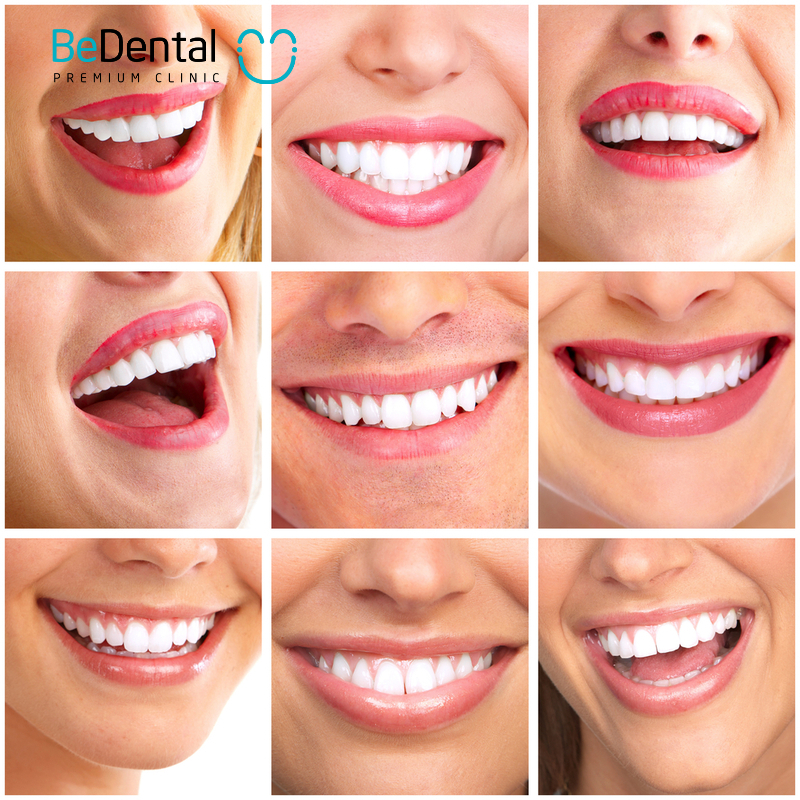What is the purpose of orthodontic elastics? Does wearing orthodontic elastics hurt ? And how do you take care of your teeth while wearing elastics? Follow the detailed information provided below to learn more.
What are orthodontic elastics?
Orthodontic elastics are a strip of rubber bands connected in a series of small circles. This tool helps close gaps between two or more teeth during the orthodontic alignment process.
The elastics create gradually increasing tension to close existing gaps or spaces that may appear after braces are applied.
Although made from high-quality rubber, they are completely safe for human health, with excellent durability and absolute flexibility. When stretched and released, they return to their original shape.
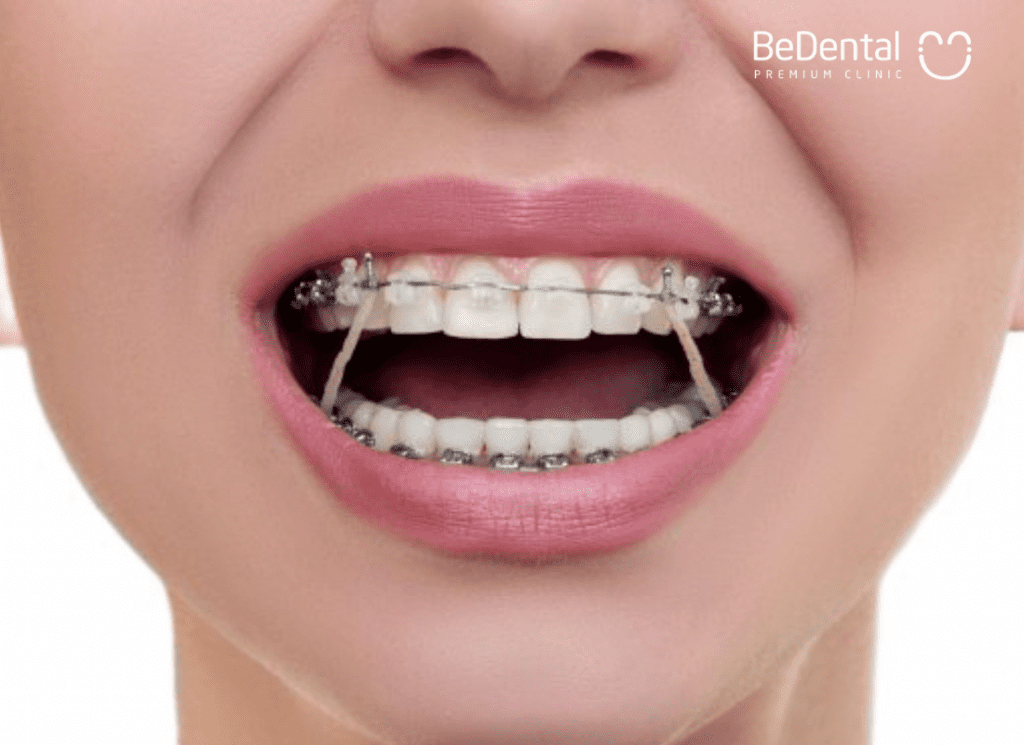
The purpose of elastics in orthodontics is to help consumers comfortably choose according to their preferences, orthodontic elastics come in up to 28 different colors. If you don’t want the orthodontic treatment process to be boring, you can use elastics in various vibrant colors such as yellow, blue, pink, etc. These tools can resist blood staining, plaque buildup, and are waterproof.
The orthodontic treatment time will be faster when wearing orthodontic elastics. In some cases of spacing between teeth, to achieve the best results, orthodontists use elastics in combination with other tools to gradually align and adjust the teeth until they are evenly aligned and fully closed together.
What is the purpose of orthodontic elastics?
What is the purpose of orthodontic elastics? According to dentists, not every orthodontic case requires the use of elastics. Additionally, the effectiveness of orthodontic elastics varies depending on the condition of the teeth. Here are some common purposes of orthodontic elastics:
For crooked teeth
In cases of crooked teeth, teeth growing in the wrong direction, or teeth tilting upwards, using elastics is very suitable. Patients will wear the elastics every day, and with consistent pulling force, the teeth will gradually move into the correct position.
For overbite
In this case, the elastics will be placed diagonally between the upper and lower jaws, specifically placing the elastics from the front of the upper jaw to the back of the lower jaw. This action will simultaneously help pull the upper jaw inward and push the lower jaw outward, creating a balanced arch for the patient’s teeth.
For bite alignment issues
If you are experiencing bite alignment problems such as an open bite, crossbite, or misaligned bite, orthodontic elastics are definitely a tool you should use during the jaw alignment process. The elastics will exert pressure on the braces, adjusting the position of the teeth and improving conditions related to the jawbone.
How long do I have to wear orthodontic elastics
The duration of wearing orthodontic elastics depends on the condition and treatment plan prescribed by your orthodontist. The success of this method will be reflected in achieving a balanced bite and proper tooth alignment.

In some cases, patients only need to use elastics for a short period of time during the orthodontic treatment process. For severe misalignment, you may have to wear elastics throughout your orthodontic treatment, and change the elastics as instructed by the dentist.
In general, the duration of wearing elastics will be determined and decided by the dentist. You will no longer need to use them if your bite ensures proper chewing and balanced mouth structure.
Does wearing orthodontic elastics hurt?
Does wearing orthodontic elastics hurt? Similar to wearing other types of orthodontic appliances, you may feel some discomfort and soreness in the initial period of using elastics. However, this sensation will gradually decrease after a few days.
If the pain affects your daily activities and work, it is advisable to consult your dentist for pain relief medication to make your orthodontic treatment process as comfortable as possible.
Types of elastics used in orthodontics
The types of elastics used in orthodontic treatment depend on the treatment plan designed by the orthodontist for you. Currently, there are basic types of orthodontic elastics available on the market:
Separators elastics
Separators elastics are used to place between the molars, usually made of rubber or metal. These elastics act as a cushion before the dentist attaches the braces. The space created by the separators elastics makes it easier to place the orthodontic bands, ensuring a secure fit.
Single elastics
Single elastics come in various colors, from white to colored, and they serve to hold the archwire and brackets together. Single elastics are very popular among students as they can choose their favorite colors. This type of elastic has a certain degree of elasticity, so users will need to replace them after about 2 weeks of use.
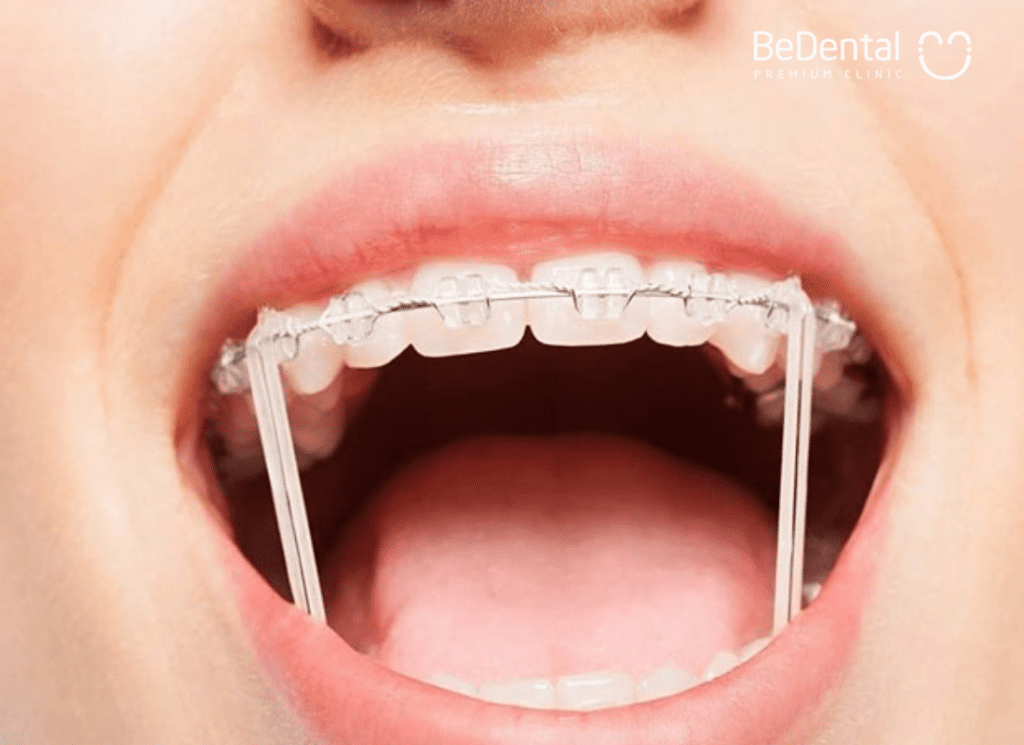
Elastics chain
This is a type of appliance specifically used for cases of spacing between teeth. The dentist will attach each end of the elastic to the brackets, and the force exerted by the elastic will bring the gaps between the teeth closer together. Therefore, elastic chains have relatively high elasticity.
Interarch elastics
Interarch elastics are used on the teeth by using a type of elastic with good elasticity, attaching it to the brackets on the upper and lower jaws corresponding to each other. This action creates a stable pulling force on the teeth, helping them quickly return to their correct positions within the jaw, addressing dental issues.
With these effects, different types of interarch elastics also help shorten the patient’s orthodontic treatment time.
Why use orthodontic elastics in orthodontic treatment?
It is necessary to use various types of orthodontic elastics in orthodontic treatment because they are an important component in determining the results of the braces method. Specifically, orthodontic elastics have the following functions:
- Orthodontic elastics create additional pulling forces along with the archwire to move the teeth to the desired positions more quickly. Additionally, these elastic bands orthodontic help the position of the upper and lower jaws to fit closely together and improve the bite.
- Elastic bands orthodontic physically pull misaligned teeth upwards towards the upper jawbone or pull rotated teeth into their correct positions, achieving proper alignment.
- In cases of overjet (protrusion), orthodontic elastics are placed from hooks on the upper jaw to hooks on the lower jaw, pulling the upper teeth backward. Simultaneously, these elastics orthodontics also help pull the lower teeth forward, achieving more even tooth positions.
- In cases of crowding, the orthodontist will use class 2 elastics in orthodontics to apply the right amount of force on the upper jaw to move the teeth to the desired position. Class II orthodontic elastics or class III elastics orthodontics may also be used for adjustments based on individual cases.
- For issues such as crossbites, crossbite elastics orthodontics help correct the alignment by applying lateral force to bring the teeth into their ideal position.
Orthodontic elastics also come in various sizes, and understanding elastic bands orthodontic sizes explained can ensure their proper usage. For example, class 2 orthodontic elastics and class 3 elastics orthodontics differ in their application and purpose.
In certain cases, orthodontists may prescribe box elastics orthodontics, which are used to close gaps and improve vertical alignment. Additionally, tools like an orthodontic elastic tool 3D print can help patients easily manage these elastic in orthodontics.
Patients can purchase orthodontic elastics from specialized providers such as American Orthodontics elastics, which offers a detailed American Orthodontics elastics chart to guide appropriate use. Popular brands include creatures of the sea orthodontic elastics, known for their reliability and quality.
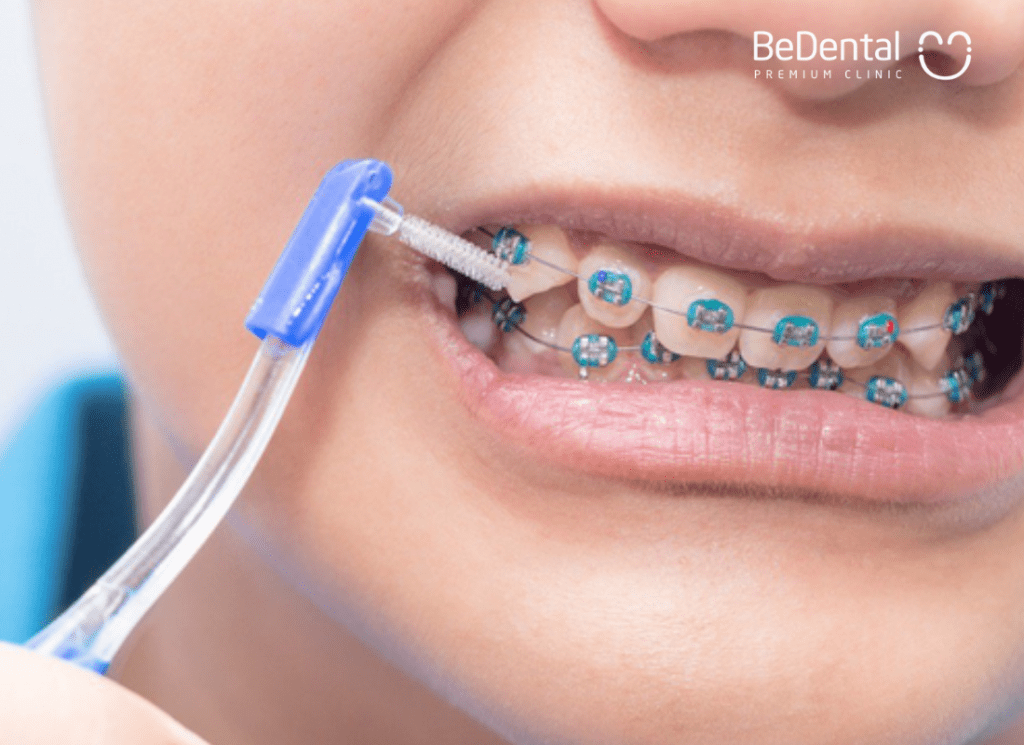
How to choose the right elastic chain for braces
The elastic chain for braces is made from environmentally friendly and safe natural rubber. Furthermore, it has high quality, durability, and good elasticity. Therefore, users can feel confident when using it.
Currently, to enhance aesthetics, the elastic chain is produced in 28 different colors with features such as resistance to staining, water resistance, and no sticky residue on the teeth. You can freely choose according to your personal preferences. In addition, the elastic chain is also divided into different types based on the following criteria:
- Based on size: Short elastic chain, long elastic chain, and continuous elastic chain.
- Based on force: Light elastic chain, heavy elastic chain, and medium elastic chain.
- Based on the type of brackets: Thin elastic chain (used for brackets on the lingual side), thick elastic chain, etc.
The division of the elastic chain into various types is to suit the condition and treatment plan of each individual. Consult your dentist to choose the most suitable elastic chain for you.
Guide on how to replace orthodontic elastics
The method of wearing the elastic chain during the braces process is quite simple. You can observe how the dentist does it, watch videos of wearing elastic chains for braces online, or you can do it yourself at home following the instructions below.
Wearing the elastic chain between two teeth
To wear the elastic chain between 2 teeth, you need to use a continuous elastic chain.
- Step 1: Use a specialized dental tool or sterilized tweezers to hook the elastic onto one end of the bracket.
- Step 2: Stretch and hook the remaining end onto the bracket on the other side.
Wearing the elastic chain between multiple teeth
In this case, you need to use a longer elastic chain with more attachment points.
- Step 1: Use a specialized dental tool or sterilized tweezers to hook the elastic onto the bracket of the first tooth.
- Step 2: Stretch the elastic chain and hook the attachment point onto the bracket of the next tooth. Repeat this process until finished.
Note when wearing orthodontic elastics
Using orthodontic elastics correctly will significantly affect the effectiveness of your treatment. Therefore, to accelerate the speed of your dental alignment, you need to pay attention to the following issues:
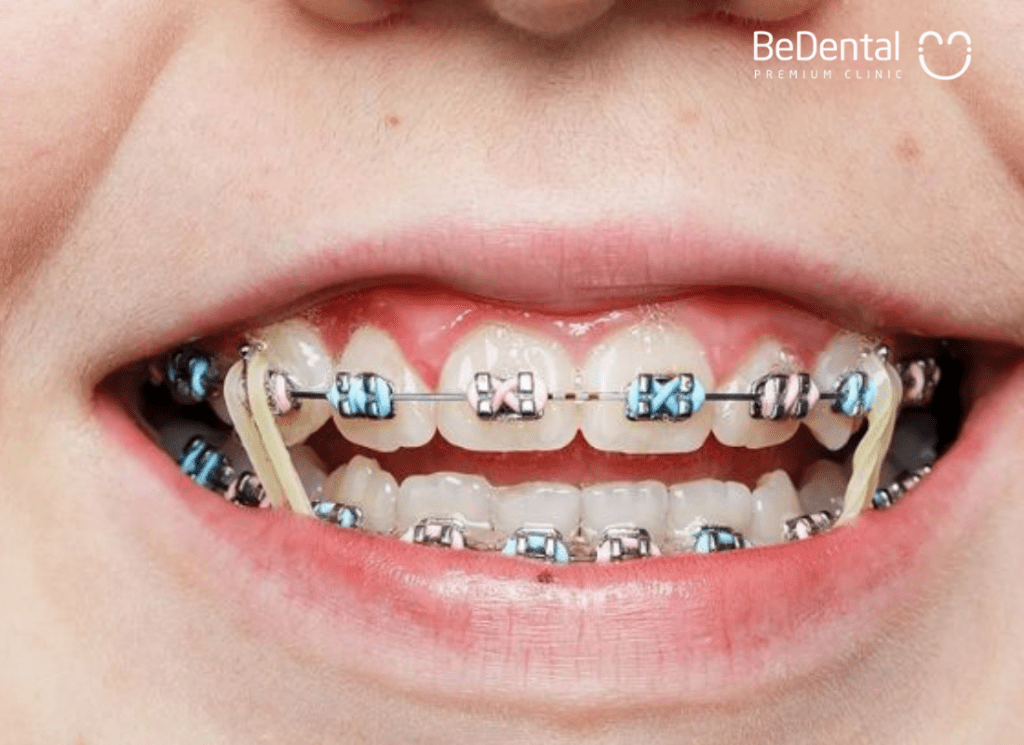
| DO’S | DON’TS |
|
|
How to care for your oral hygiene while wearing elastic chain braces
Wearing elastic chains for a long period of time requires some extra attention to oral care and dietary habits to ensure your comfort.
Oral care and hygiene
- Brush your teeth after every meal to remove any leftover food particles that may accumulate around the brackets and elastic chains.
- Brush your teeth gently using a soft-bristled toothbrush, interdental brushes, or an electric toothbrush if possible. Be careful around the brackets and elastic chains.
- Use dental floss to remove any food particles stuck between your teeth.
- Use a specialized mouthwash as a final step to ensure that bacteria are not left behind.
- After completing your oral hygiene routine, check the brackets and elastic chains in the mirror to make sure everything is in place.
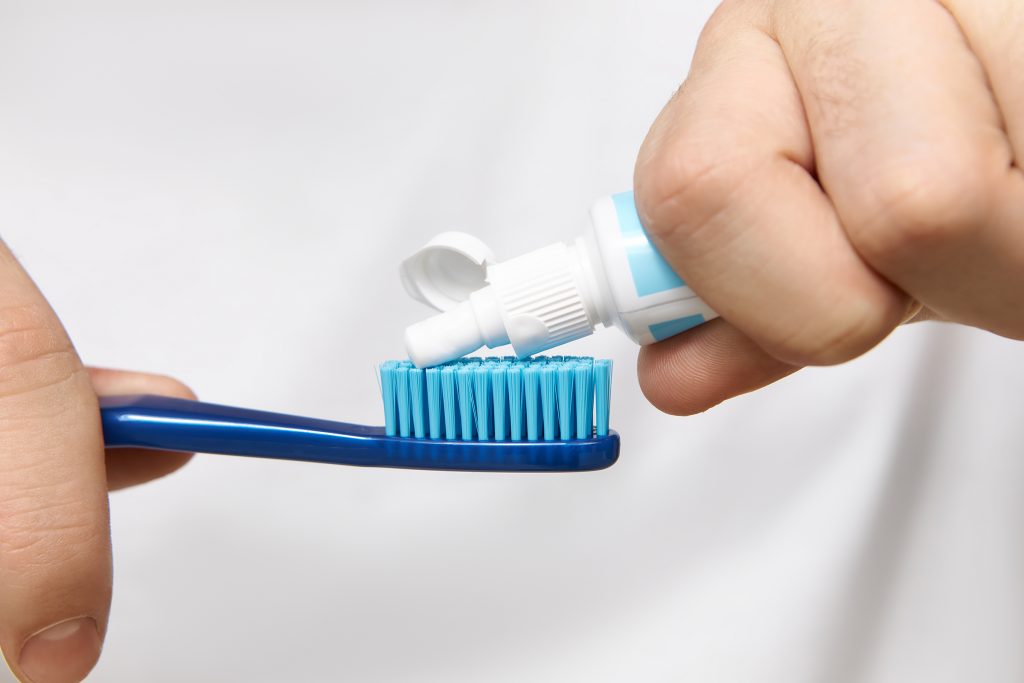
Appropriate dietary habits
It is recommended to consume soft foods such as porridge, noodles, yogurt, cheese, smoothies, fruit juices, soft bread, etc.
Avoid sticky foods that can get stuck easily, excessively hard foods that may break the elastic chains, and foods high in sugar that can accelerate plaque formation.
Follow the dentist’s appointment schedule
When wearing braces, it is important to keep up with your scheduled dental appointments. If an elastic chain breaks and you are unable to handle it, visit a dental clinic for adjustments.
Elastic chains are a familiar tool in the orthodontic process. They serve various purposes, with the most important one being to close the gaps between teeth. We hope the information above helps you understand more about their usage and other considerations!
You can contact BeDental directly at the address below:
Tư vấn chuyên môn bài viết:
BÁC SĨ DƯƠNG THỊ THÙY NGA
BEDENTAL - TOP STANDARD DENTISTRY SYSTEM
In HANOI
Address 1: 7B Thi Sach St, Ngo Thi Nham, Hai Ba Trung Dist, Ha Noi. - 0934.61.9090
Address 2: No 129 Hoang Ngan, Yen Hoa, Cau Giay Dist, Ha Noi. - 0934.61.9090
In HO CHI MINH
Address 1: 53 -55 -57 Pho Duc Chinh St, Nguyen Thai Binh, Dist. 1, Ho Chi Minh. - 0766.00.8080
Working: 9am - 8pm everyday
Website: https://bedental.vn/en/
PLEASE LEAVE YOUR INFORMATION IF YOU WANT DENTAL CONSULTATION




